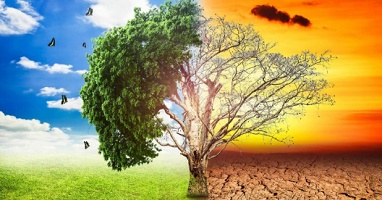What are atmospheric phenomena?
We explain what atmospheric phenomena are, what types exist, their consequences, characteristics and various examples.
-
What are atmospheric phenomena?
Atmospheric phenomena, or meteorological phenomena, are all events that take place in the Earth ‘s atmosphere . Mostly due to local variations and imbalances of temperature and density , ie wind, which always go areas air cooler, dense air to areas warmer and dilated.
The Earth’s atmosphere comprises various strata as it moves away from the Earth’s surface, varying in its pressure and temperature conditions. The same happens when you change latitude and longitude , according to the different climatic regions of the world, which change in relation to humidity , density and amount of solar energy received.
Changes in the forces and properties of the atmosphere cause various phenomena , such as the hydrological cycle and the different meteorological cycles of the globe. They also cause more intense or erratic atmospheric phenomena, which may well be transformed into a natural catastrophe, or even of striking atmospheric optical effects.
Broadly speaking, atmospheric phenomena can be of three types, according to their nature:
- Opticians , when they are due to the way in which sunlight enters the Earth’s atmosphere, and its interaction with air at its different levels. An example of this is the northern lights.
- Water , when due to the impact of atmospheric conditions on the hydrological or water cycle. For example, rains and drizzles.
- Meteorological , when they are due to the incidence of pressure and temperature conditions on the air masses that make up the atmosphere (winds). For example, hurricanes and tropical depressions.
-
Examples of atmospheric phenomena

We can list some known atmospheric phenomena, such as:
- Precipitations . That is, rain, drizzle and, depending on the conditions of pressure and temperature in atmospheric regions near the earth’s surface, also hail and snow, as they are solid or semi-solid forms of water .
- Hurricanes . This fearsome atmospheric phenomenon is due to the encounter and contrast of hot and cold winds that, turning around a common axis, are trapped and generate a loss of pressure. In principle, these typically tropical and Atlantic Ocean phenomena are called “tropical depressions,” and as they absorb matter and energy , enlarging, they become “tropical storms” and finally “hurricanes.” They are characterized by high rainfall, winds of great force and speed, and rapid drops in temperature.
- Auroras . Both in the northern hemisphere ( aurora borealis ) and in the south (southern aurora), these visual phenomena are due to the impact of solar particles emitted into space (solar wind) with the Earth’s magnetosphere, producing in the regions near the planet’s poles a visual spectacle of colors, lights and apparent shapes in the sky.
- Tornadoes . A tornado is a column of vortex air that is in contact with the earth’s surface and with a nimbus cumulus cloud, rotating on its axis with an extremely high angular velocity. It is the cyclonic phenomenon with the highest energy density on the planet, and they usually have a funnel or inverted cone shape, being able to drag and throw various materials and living things in their path .
- The arcoíris . Rainbows are very well known optical phenomena, which cross the sky after (or during) a light rain or some other similar situation of atmospheric humidity. In these cases, sunlight passes through the raindrops as it would with a prism, decomposing into all the colors that make up the spectrum of visible light.





